Mount Angel Abbey Awarded $10 Million Grant in Pathways for Tomorrow Initiative
Mount Angel Seminary Partners with Five ATS-Accredited Seminaries and the
Seminary Formation Council for Priestly Mentorship and Training
Contact:
Dr. Amanda Staggenborg
amanda.staggenborg@mtangel.edu
(SAINT BENEDICT, Ore.)- Mount Angel Abbey has received a grant of $10 million from Lilly Endowment Inc. to help establish a new, large-scale national mentorship training initiative for the Program of Priestly Formation, 6th ed. Mount Angel Seminary (MAS), an apostolate of Mount Angel Abbey, will lead the effort in partnership with collaborating institutions.
The project will feature collaboration with:
- Saint Mary Seminary (Cleveland, OH)
- Saint Vincent de Paul Regional Seminary (Boynton Beach, FL)
- The Saint Paul Seminary (Saint Paul, MN)
- USML Mundelein Seminary (Mundelein, IL)
- Saint Charles Borromeo Seminary (Philadelphia, PA)
- The Seminary Formation Council
The project is being funded through Lilly Endowment’s Pathways for Tomorrow Initiative. This initiative is designed to help theological schools across the United States and Canada prioritize and respond to the most pressing challenges they face as they prepare pastoral leaders for Christian congregations now and into the future. The grant to Mount Angel Abbey is one of 45 that was approved in this competitive round of funding to support theological schools as they lead large-scale collaborations with other seminaries, colleges and universities, and other church-related organizations.
Abbot Jeremy Driscoll, Abbot and Chancellor of Mount Angel Abbey and Seminary, expressed the significance of the award, stating, “For nearly 140 years, our monastic community has operated the Seminary as our primary apostolate, forming priests for many dioceses in this country who are prepared for the ever-changing demands of pastoral ministry. We joyfully accept this award which allows us to continue this important work of priestly formation and to bring it to a new level, and I am confident in Fr. Eirvin’s leadership as he guides us through the development and implementation of this initiative.”
This collaborative endeavor prepares pastoral leaders at the foundational level: by forming the mentors who form them. This integrated mentorship model ensures that priestly formation does not end at ordination but culminates in the Vocational Synthesis Stage, newly mandated by the United States Conference of Catholic Bishops (USCCB) in the Program of Priestly Formation, 6th ed.
“As we prepare the next generation of priests for a changing world, equipping them for leadership, administration, and relational demands is vital for the success of parish life,” said Very Rev. Jeff Eirvin, President-Rector of Mount Angel Seminary. “Through the generosity of the Lilly Endowment and collaboration with multiple other seminaries and ministries nationwide, Mount Angel Seminary is excited to lead a new initiative that equips mentor priests to confidently accompany new clergy through a healthy integration into parish ministry, setting a solid foundation for the rest of their lives.”
Lilly Endowment launched the Pathways for Tomorrow Initiative in 2021. Since then, it has provided grants totaling more than $700 million to support 163 theological schools in efforts to strengthen their own educational and financial capacities and to assist 61 schools in developing large-scale collaborative endeavors.
About Mount Angel Abbey and Seminary
Mount Angel Abbey, a Benedictine monastic community founded in 1882, is dedicated to a life of prayer, work, pastoral ministry, hospitality and education. Mount Angel Seminary, an apostolate of Mount Angel Abbey and the largest seminary in the West, forms men for the Roman Catholic priesthood. The Abbey Foundation of Oregon supports the monastic community’s mission of service to the Church.
About Lilly Endowment Inc.
Lilly Endowment Inc. is a private foundation created in 1937 by J.K. Lilly Sr. and his sons Eli and J.K. Jr. through gifts of stock in their pharmaceutical business, Eli Lilly and Company. While those gifts remain the financial bedrock of the Endowment, it is a separate entity from the company, with a distinct governing board, staff and location. In keeping with the founders’ wishes, the Endowment supports the causes of community development, education and religion and maintains a special commitment to its hometown, Indianapolis, and home state, Indiana. A principal aim of the Endowment’s religion grantmaking is to deepen and enrich the lives of Christians in the United States, primarily by seeking out and supporting efforts that enhance the vitality of congregations and strengthen the pastoral and lay leadership of Christian communities. The Endowment also seeks to improve public understanding of about religion and lift up in fair, accurate and balanced ways the roles that people of all faiths and various religious communities play in the United State and around the globe traditions in the United States and across the globe.

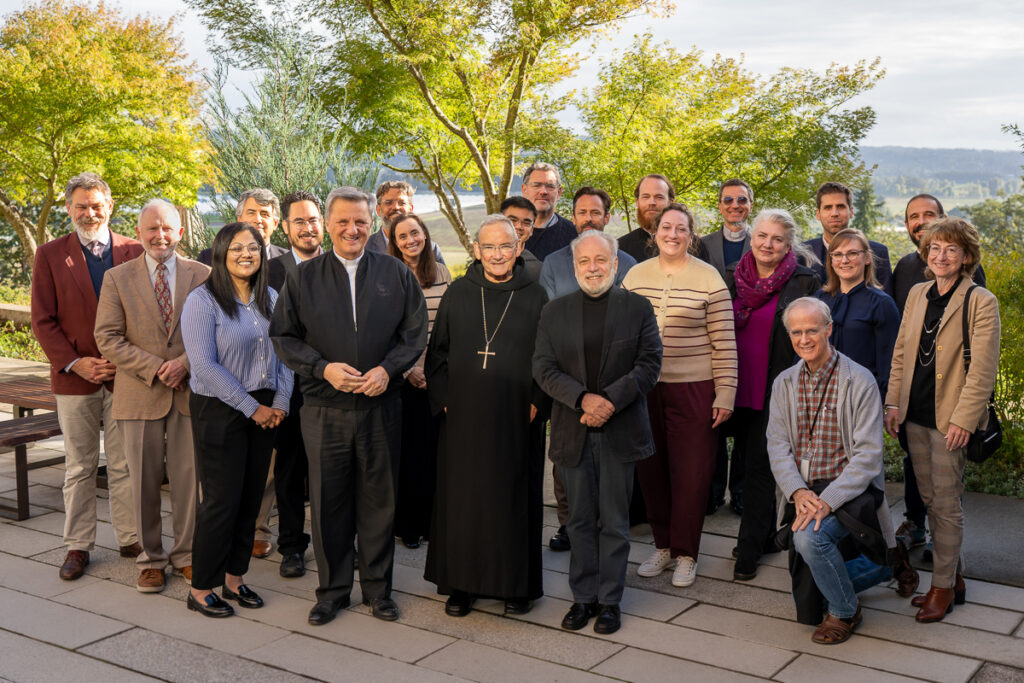
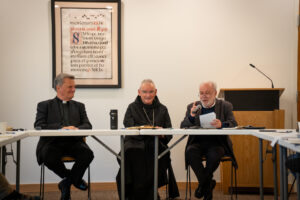 At the beginning of the Fellowship of Scholars, Cardinal Grech expressed his gratitude to Mount Angel Abbey and Seminary for “having chosen to dedicate this International Seminar to the theme of synodality in the life and vision of the Church,” calling this initiative both “precious and indeed necessary in the current phase of implementation of the 2021–2024 Synodal Process.” At the beginning of Mass for the Solemnity of the Archangels, Mount Angel Abbey’s patronal feast day and the first day of the Fellowship of Scholars, he described the Abbey as a true “spiritual oasis.” At the conclusion of the week, he shared his experience at the Abbey that, “the monks have so much to share, both from their reading and their own experiences. It is a place of beauty and beauty is a way that leads to God and it’s also a place of silence. Nowadays, we lack silence. But in silence, we can listen, really hear what the Spirit is trying to convey.”
At the beginning of the Fellowship of Scholars, Cardinal Grech expressed his gratitude to Mount Angel Abbey and Seminary for “having chosen to dedicate this International Seminar to the theme of synodality in the life and vision of the Church,” calling this initiative both “precious and indeed necessary in the current phase of implementation of the 2021–2024 Synodal Process.” At the beginning of Mass for the Solemnity of the Archangels, Mount Angel Abbey’s patronal feast day and the first day of the Fellowship of Scholars, he described the Abbey as a true “spiritual oasis.” At the conclusion of the week, he shared his experience at the Abbey that, “the monks have so much to share, both from their reading and their own experiences. It is a place of beauty and beauty is a way that leads to God and it’s also a place of silence. Nowadays, we lack silence. But in silence, we can listen, really hear what the Spirit is trying to convey.”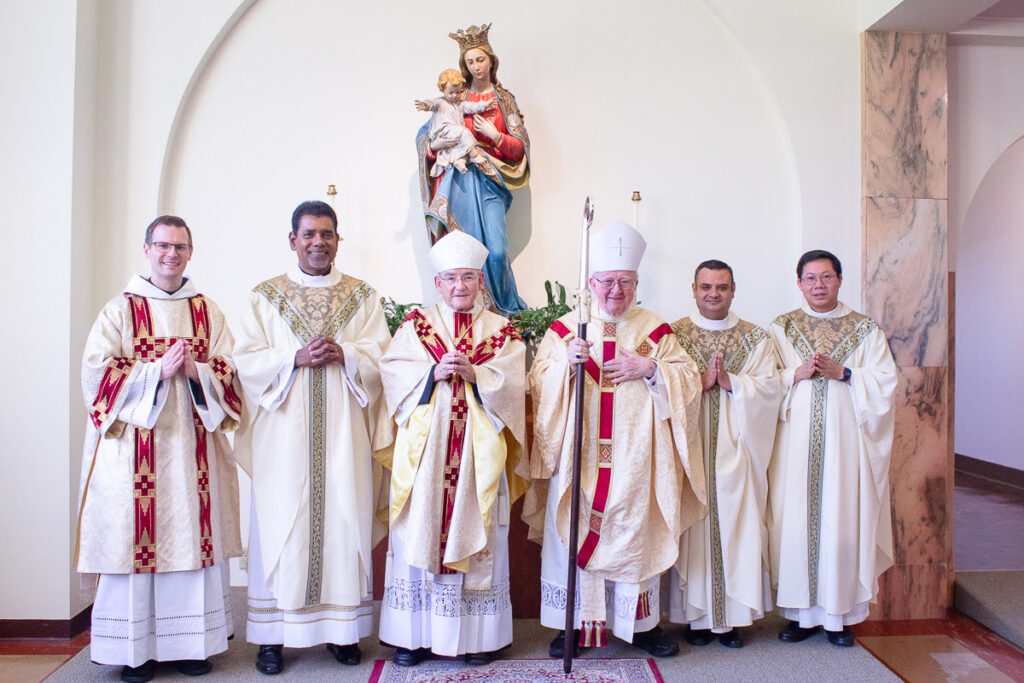 Bishop Kevin Vann, Bishop of the Diocese of Orange, celebrated his 20th anniversary of episcopal ordination with Abbot Jeremy Driscoll, OSB, and the monks of Mount Angel Abbey on July 13, 2025, with Mass in the Abbey church. He was the principal celebrant and homilist for the Mass, giving thanks to God and to the monks of Mount Angel for the support and friendship they have offered him as Bishop of Orange.
Bishop Kevin Vann, Bishop of the Diocese of Orange, celebrated his 20th anniversary of episcopal ordination with Abbot Jeremy Driscoll, OSB, and the monks of Mount Angel Abbey on July 13, 2025, with Mass in the Abbey church. He was the principal celebrant and homilist for the Mass, giving thanks to God and to the monks of Mount Angel for the support and friendship they have offered him as Bishop of Orange.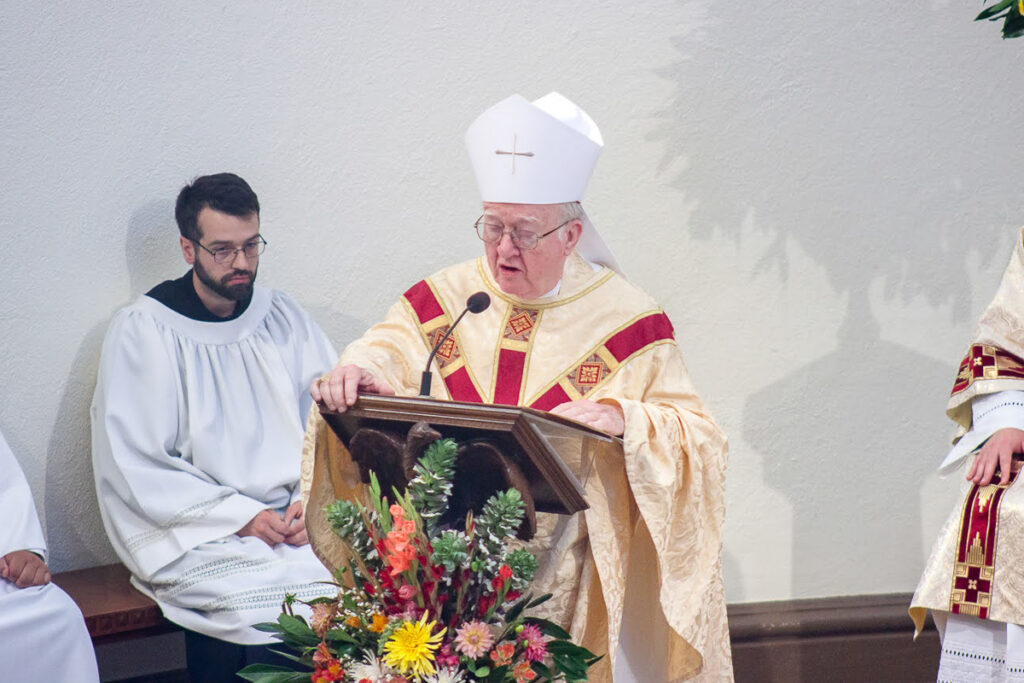 In his homily at Mount Angel for his 20th anniversary, Bishop Vann spoke about the Benedictine influence in his life from his seminary days forward. Addressing the monks, he said, “Most importantly, with all of you, as an oblate … I have found stability and family.” Bishop Vann made his final oblation as a Benedictine oblate of Mount Angel Abbey on July 26, 2024. He expressed his gratitude for the monks’ primary apostolate, Mount Angel Seminary, saying: “I am grateful, above all, to experience your solid formation and care for our seminarians, which is a blessing in a time when the number of our candidates is increasing significantly, and I’m grateful that we send you this year the ones we have.” Bishop Vann himself is an alumnus of Mount Angel Seminary, having earned his Doctor of Ministry on May 11, 2024.
In his homily at Mount Angel for his 20th anniversary, Bishop Vann spoke about the Benedictine influence in his life from his seminary days forward. Addressing the monks, he said, “Most importantly, with all of you, as an oblate … I have found stability and family.” Bishop Vann made his final oblation as a Benedictine oblate of Mount Angel Abbey on July 26, 2024. He expressed his gratitude for the monks’ primary apostolate, Mount Angel Seminary, saying: “I am grateful, above all, to experience your solid formation and care for our seminarians, which is a blessing in a time when the number of our candidates is increasing significantly, and I’m grateful that we send you this year the ones we have.” Bishop Vann himself is an alumnus of Mount Angel Seminary, having earned his Doctor of Ministry on May 11, 2024.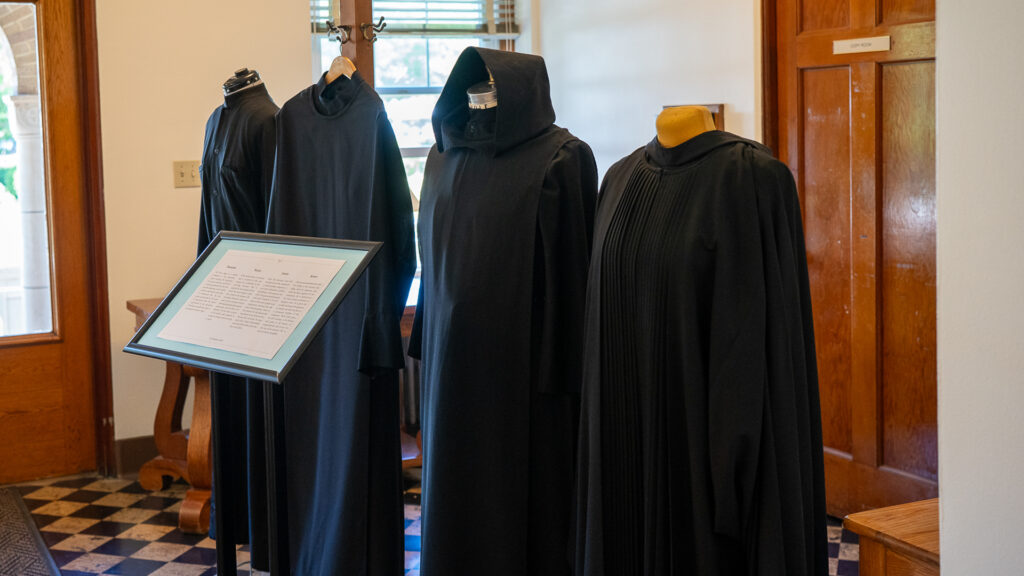
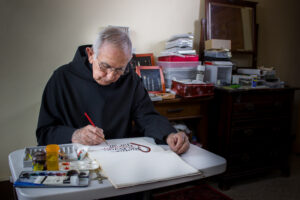
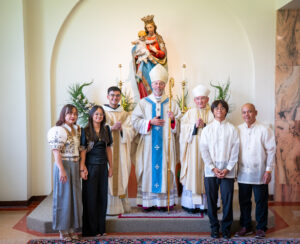
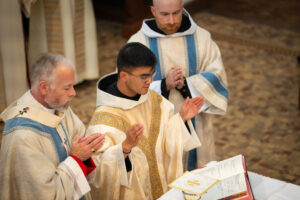
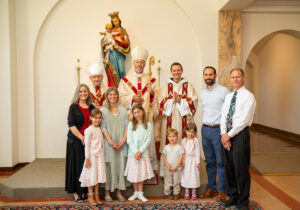
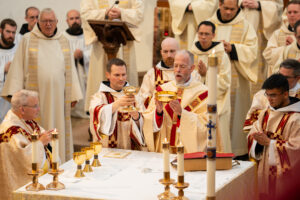
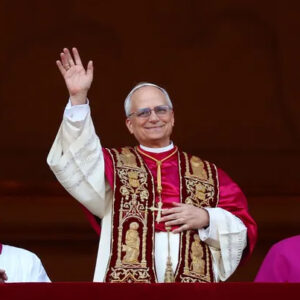 “Is that white smoke?” I asked Br. Gabriel Brands, OSB, as we watched the “chimney stream” from Vatican News in the monastery’s recreation room. I entered shortly after Mass to see if smoke, white or black, was billowing out from the chimney set atop the Sistine Chapel. There was not much excitement for the first few minutes. But quickly, three birds settled atop the roof and began captivating both local and international attention. Moments later, the white smoke began to pour out of the chimney, and we knew that the College of Cardinals had elected the next Holy Father and successor of St. Peter. Abbot Jeremy Driscoll, OSB, was one of the first monks to join us as he received a phone call from Fr. Israel Sanchez, OSB, a Mount Angel monk studying in Rome and standing in St. Peter’s Square, sharing that a new pope had been elected.
“Is that white smoke?” I asked Br. Gabriel Brands, OSB, as we watched the “chimney stream” from Vatican News in the monastery’s recreation room. I entered shortly after Mass to see if smoke, white or black, was billowing out from the chimney set atop the Sistine Chapel. There was not much excitement for the first few minutes. But quickly, three birds settled atop the roof and began captivating both local and international attention. Moments later, the white smoke began to pour out of the chimney, and we knew that the College of Cardinals had elected the next Holy Father and successor of St. Peter. Abbot Jeremy Driscoll, OSB, was one of the first monks to join us as he received a phone call from Fr. Israel Sanchez, OSB, a Mount Angel monk studying in Rome and standing in St. Peter’s Square, sharing that a new pope had been elected.